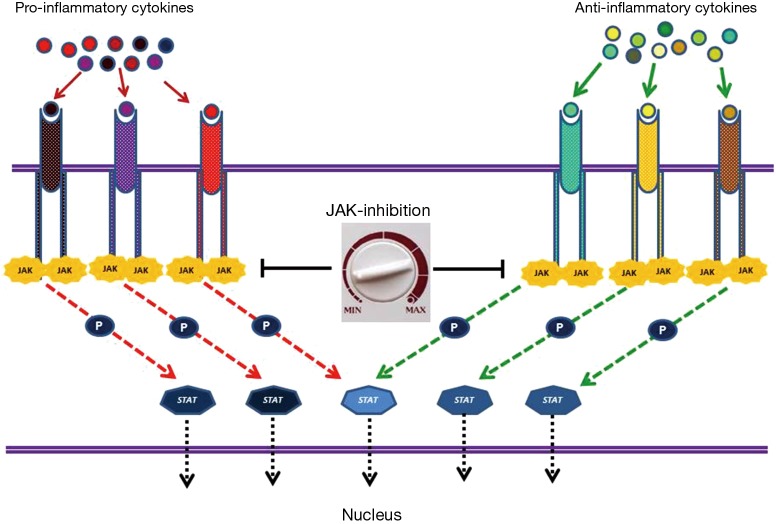Figure 1.
Binding of pro and anti-inflammatory cytokines to specific receptors expressed on the cell surface results in activation of JAK-STAT signal transduction pathway. Janus tyrosine kinase family consists of four non-receptor kinases (Jak1, Jak2, Jak3, and Tyk2). Activated JAKs recruit and phosphorylate STAT proteins. STAT family consists of seven functionally related proteins (Stat1, Stat2, Stat3, Stat4, Stat5a, Stat5b, and Stat6). Activated STATs dissociate from the receptor, dimerize and translocate to nucleus and regulate gene expression. Various cytokines activate different JAK-STAT complexes and result in characteristic gene expression patterns. JAK inhibition results in downstream signaling blockade of all pro and anti-inflammatory cytokines. Moreover, escalating or de-escalating the dose of JAK-inhibitor offers the unique possibility of balanced monitoring of both pro and anti-inflammatory phases in sepsis. JAK, kinase of Janus; STAT, signal transducer and activator of transcription.

